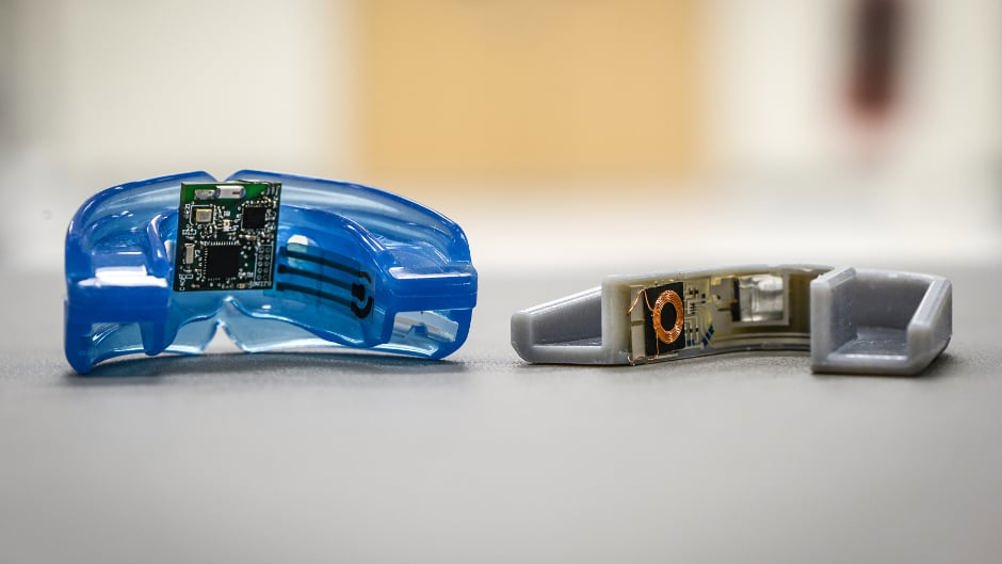Mouthguard sensor measures lactate to improve performance of athletes
A mouthguard is being developed to continuously monitor lactate, glucose or other analytes, an advance that could help athletes optimise their performances.

Lactate is an important marker of fitness and fatigue and by enabling continuous monitoring during training and sports the mouthguard system is expected to give athletes and their coaches unique access to key performance information for real-time optimisation.
The wirelessly rechargeable electrochemical sensor – which uses Bluetooth Low Energy for data communication - is fabricated on a flexible plastic foil, then mounted on the mouthguard.
The mouthguard system is being developed by PARC, a subsidiary of Xerox Corporation, and the University of California San Diego. It has received funding from NextFlex, a consortium of public and private entities formed to advance the development of flexible-hybrid electronics (FHE).
“In the semi-automated FHE fabrication process, the first interconnect is screen-printed on a flexible polymer substrate in a three-step process,” explained Dr David Schwartz, project lead and manager of Energy Devices and Systems at PARC. “The primary set of conductive traces are printed, a dielectric protective layer is printed in areas where two traces will cross over, [and] the conductive crossovers are printed.
Register now to continue reading
Thanks for visiting The Engineer. You’ve now reached your monthly limit of news stories. Register for free to unlock unlimited access to all of our news coverage, as well as premium content including opinion, in-depth features and special reports.
Benefits of registering
-
In-depth insights and coverage of key emerging trends
-
Unrestricted access to special reports throughout the year
-
Daily technology news delivered straight to your inbox










Simulations show Optimal Design for Bladeless Wind Turbines
"an 80cm mast" Really? I'm short but that's only half my height! Do they mean 800cm?